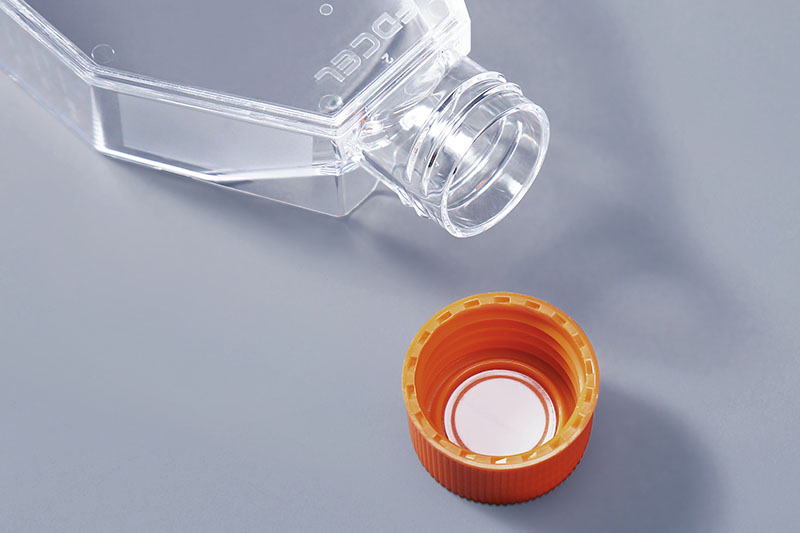The cell culture flask is a square, wide-necked cell culture container, which is a commonly used consumable for adherent cell culture. The growth of cells is affected by a variety of factors, the most common of which are the following four:
1. The state of the cell itself: the state of the cell itself is an important factor affecting the growth of the cell. If the number of passages is too many, it is easy to age the cells and affect the later proliferation. When using trypsin for cell digestion in the later stage, the time should be well controlled. If the time is too short or too long, it will affect the later growth of cells.
FuDau T25 Cell Culture Flasks
2. Bacterial contamination: Cell growth requires a sterile environment. If the cells in the cell culture flask are contaminated by mycoplasma or mold, the cells will grow slowly or even die. Therefore, aseptic operations should be strictly followed when culturing cells.
3. Medium or serum: These two solutions provide cells with nutrients needed for growth, but different cells have different requirements for medium or serum. Selecting a suitable medium according to cell characteristics can ensure the normal growth of cells in the later stage.
FuDau T75 Cell Culture Flasks
4. Culture environment: The gas environment is also one of the important conditions for cell growth. Whether the supply of carbon dioxide is normal will also affect the growth state of cells.
In short, there are many factors that affect the growth of cells in cell culture flasks, and the above are the common ones. In addition, if it is adherent cells, TC-treated consumables should be selected, which can allow the cells to grow better.
The FAI climbed 5.9 percent year-on-year in the first 11 months of 2018, quickening from the 5.7-percent growth in Jan-Oct, the National Bureau of Statistics (NBS) said Friday in an online statement.
The key indicator of investment, dubbed a major growth driver, hit the bottom in August and has since started to rebound steadily.
In the face of emerging economic challenges home and abroad, China has stepped up efforts to stabilize investment, in particular rolling out measures to motivate private investors and channel funds into infrastructure.
Friday's data showed private investment, accounting for more than 60 percent of the total FAI, expanded by a brisk 8.7 percent.
NBS spokesperson Mao Shengyong said funds into weak economic links registered rapid increases as investment in environmental protection and agriculture jumped 42 percent and 12.5 percent respectively, much faster than the average.
In breakdown, investment in high-tech and equipment manufacturing remained vigorous with 16.1-percent and 11.6-percent increases respectively in the first 11 months. Infrastructure investment gained 3.7 percent, staying flat. Investment in property development rose 9.7 percent, also unchanged.
 English
English




















































